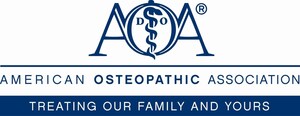Barefoot Running Strides into the Mainstream with Pros and Cons for Runners
SAN FRANCISCO, Oct. 25 /PRNewswire-USNewswire/ -- Until recently, running shoeless has had little more than a fringe following of enthusiasts. However, new research and the popularity of "five finger" shoes—a minimalist shoe that fits the foot like a glove—has barefoot running striding into the mainstream.
Robert S. Gotlin, DO, director of orthopaedic and sports rehabilitation in the Department of Orthopaedic Surgery at Beth Israel Medical Center in New York City, discussed the pros and cons of barefoot running during a presentation today at the American Osteopathic Association's (AOA) 115th Osteopathic Medical Conference & Exposition, known as OMED 2010 Unified, in San Francisco, where thousands of osteopathic physicians (DOs) and medical students from around the globe are gathering to discuss a variety of health care topics and new medical research.
Proponents contend that barefoot running enhances performance and lowers chances of injury while critics stress shoes are necessary for protecting the feet.
Dr. Gotlin, who is AOA board certified in physical medicine and rehabilitation, notes that to understand the benefits and risks of barefoot running, you need to look at the biomechanics behind it.
"The most important thing to understand is that shoe runners typically land on the heel and barefoot runners typically land on the front of the foot, which changes the impact force on the foot and the lower extremities." explains Dr. Gotlin. "As such, when you land on your forefoot, the force upon the body is reduced significantly."
Dr. Gotlin points out that barefoot running can also strengthen the plantar fascia muscles—which run along the sole of the foot. As the front of the foot makes contact with the ground, the muscles under foot contract to let the heel down to the ground, he explains. During running, this repetitive motion builds up these muscles.
One drawback, however, is that landing on the front of the foot leaves runners more susceptible to inflammation of the Achilles tendon, known as Achilles tendonitis, stresses Dr. Gotlin. When landing on the forefoot, the Achilles tendon has to lengthen while under weight, whereas in heel-first landings the tendon is already fully stretched when the foot makes contact with the ground.
Dr. Gotlin notes that some additional benefits of barefoot running include:
- less impact to the legs and plantar fascia;
- less chance of developing shin splints; and
- better limb compliance, which can lead to better running performance.
He also highlights some additional cons:
- scrapes and bruises caused by environmental risks like stones and other objects on the ground; and
- no padding underfoot, which can reduce comfort for some runners.
OMED 2010 Unified runs through Thursday, Oct. 28, at the Moscone Center.
The American Osteopathic Association (AOA) proudly represents its professional family of more than 70,000 osteopathic physicians (DOs); promotes public health; encourages scientific research; serves as the primary certifying body for DOs; is the accrediting agency for osteopathic medical schools; and has federal authority to accredit hospitals and other health care facilities. More information on DOs/osteopathic medicine can be found at www.osteopathic.org.
SOURCE American Osteopathic Association
WANT YOUR COMPANY'S NEWS FEATURED ON PRNEWSWIRE.COM?
Newsrooms &
Influencers
Digital Media
Outlets
Journalists
Opted In






Share this article